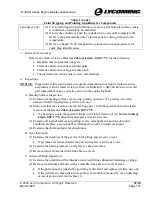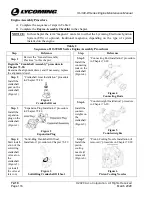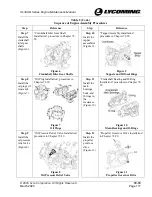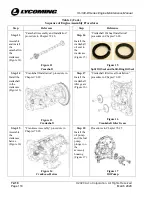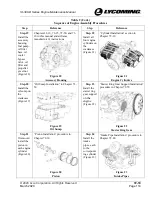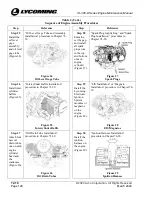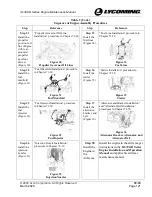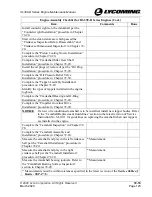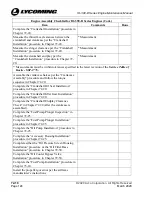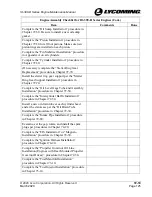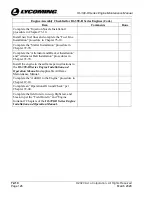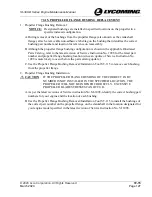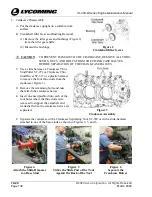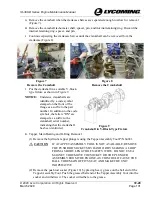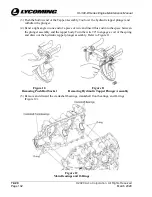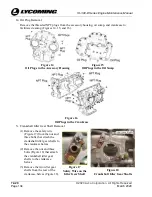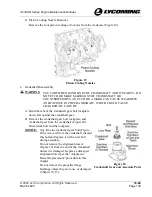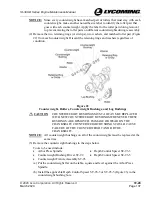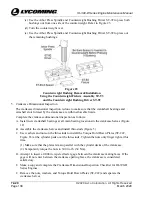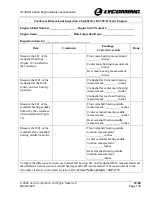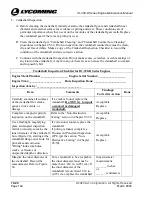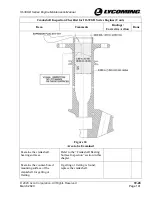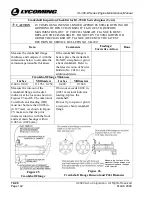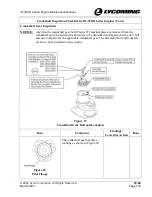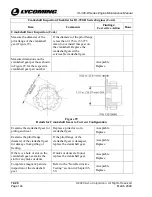
IO-390-D Series Engine Maintenance Manual
© 2020 Avco Corporation. All Rights Reserved
72-20
March 2020
Page 129
IO-390-D Series Engine Maintenance Manual
72-20 - RECIPROCATING ENGINE – CRANKCASE MAINTENANCE
1.
Crankcase Inspection Before Disassembly
A.
The crankcase inspection is done to:
•
Identify any oil leaks, cracks, and mechanical damage on the crankcase
•
Make sure that hardware fasteners are torqued correctly
WARNING
IF A DAMAGED OR CRACKED CRANKCASE IS NOT REPLACED, OIL
CAN LEAK OUT OF THE CRANKCASE AND CAUSE ENGINE
DAMAGE. DO NOT TRY TO WELD OR REPAIR A CRACKED
CRANKCASE. REPLACE THE CRANKCASE.
B.
Examine the exterior surface of the crankcase per the Visual Inspection Checklist for IO-390-
D Series Engines. Replace a damaged crankcase or a crankcase with one or more cracks.
C.
Complete a check of the torque on the crankcase hardware fasteners per the Standard Torque
Tables in the latest revision of the
Service Table of Limits - SSP-1776
.
D.
Examine the crankcase breather for cracks, dents, and damage. If cracks, dents or damage are
found, remove the engine as per Chapter 72-00 and send to Lycoming Engines.
E.
Examine the ends of the breather tube for scoring and out of roundness. If scoring or out-of-
roundness is found, replace the breather tube,
NOTICE:
In the next step, do not use a torque tool during the check for loose crankcase thru-
bolts.
F.
Manually turn by hand each crankcase thru-bolt as a check for loose bolts. If the bolt can be
manually turned, remove the bolt and examine the bolt for stripped threads. If the bolt threads
are intact, install and torque the bolt in accordance with the Standard Torque Tables in the
latest revision of the
Service Table of Limits - SSP-1776.
G.
Replace any crankcase hardware fastener that is distorted or has stripped threads. Torque all
hardware fasteners per the Standard Torque Tables in the latest revision of the
Service Table
of Limits - SSP-1776
and in the correct sequence identified in this chapter.
2.
Connecting Rod Removal
CAUTION
DO NOT RE-USE THE CONNECTING ROD BEARINGS, BOLTS, AND NUTS.
NOTICE:
If the two nuts in the connecting rod cap cannot easily be removed, use a soft (plastic
head) mallet and gently tap on the end of the two bolts to remove the nuts and the bolts.
(1)
Remove and discard the two nuts (Figure
1) and the two bolts that attach the
connecting rod cap to the connecting rod.
(2)
Remove the connecting rod cap and
connecting rod; keep them together, apply
a label to identify the throw position of the
connecting rod for reference on assembly.
(3)
Remove and discard the two connecting
rod bearings.
Figure 1
Connecting Rod Parts

